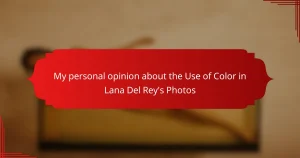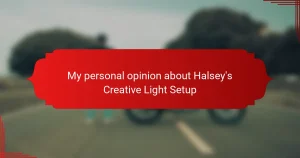Key takeaways
- Lighting techniques significantly influence the mood and emotion captured in female singer photography, enhancing the storytelling aspect of the images.
- The connection between the photographer and singer is crucial for creating unique lighting setups that reflect the artist’s personality and style.
- Different lighting approaches, such as soft lighting for intimacy and harsh lighting for dynamic energy, evoke distinct emotional responses in both the performer and audience.
- Tools like softboxes, reflectors, and colored gels are essential for achieving creative and flattering lighting effects that enhance the overall quality of the photographs.

Understanding Female Singer Photography
When it comes to capturing the essence of female singers through photography, understanding the nuances of light and mood is crucial. I’ve often found that the right lighting not only highlights their features but also conveys the emotion of the music. For example, using soft, diffused lighting can create an ethereal vibe, perfect for ballads, while sharper, contrasting lights can evoke energy and power for upbeat performances.
In my experience, the connection between the singer and the photographer is vital. When I work with artists, I make it a point to understand their style and personality. This rapport helps in crafting unique lighting setups that reflect who they are, adding depth to each photograph.
Here’s a quick comparison of different lighting techniques that can be used for female singer photography:
| Lighting Technique | Effect |
|---|---|
| Soft Lighting | Creates a gentle, flattering look that emphasizes beauty and emotion. |
| Hard Lighting | Produces dramatic shadows and highlights, adding intensity and energy to the image. |
| Backlighting | Illuminates the subject from behind, creating a halo effect and emphasizing silhouette. |
| Colored Gels | Adds mood and atmosphere, perfect for genres like pop or rock. |
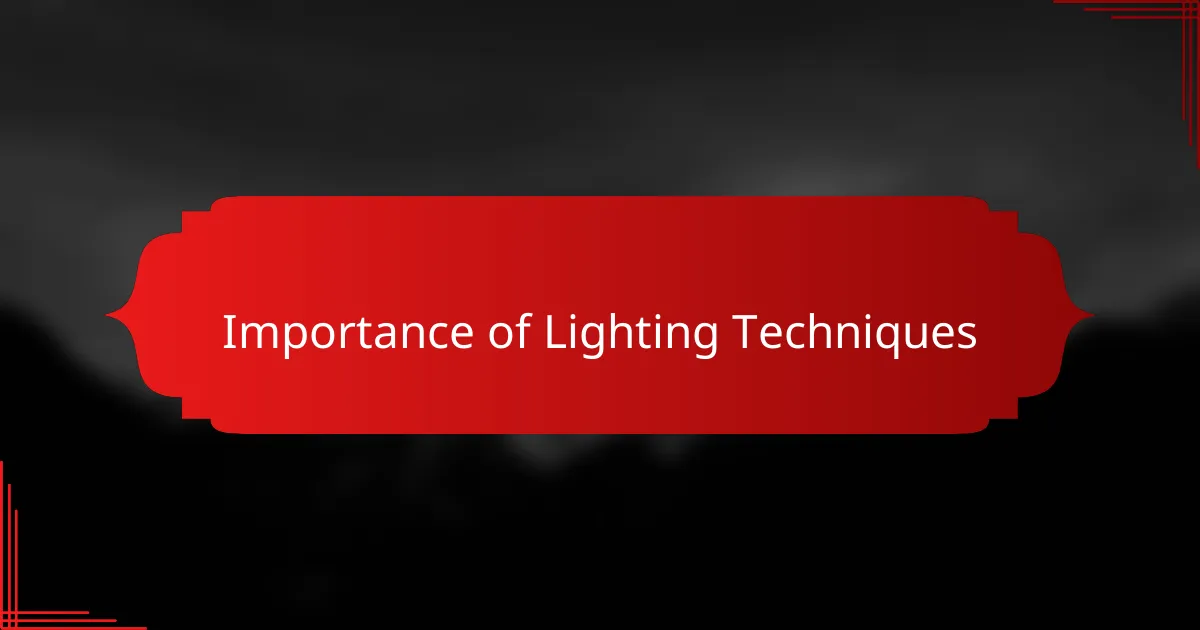
Importance of Lighting Techniques
Lighting techniques are the unsung heroes in photography, shaping not just how images look, but how they feel. I remember a session where we used soft lighting for a ballad performance; the warm glow transformed the atmosphere, making both the singer and the audience emotional. It’s incredible how a simple shift in lighting can evoke such deep connections.
Using hard lighting can create striking contrasts, which I find exhilarating. One time, I applied this technique during an energetic pop performance, and the dramatic shadows really amplified the excitement in the shots. I often wonder: can a photograph truly capture the essence of a moment without the right lighting? In my experience, the answer is a resounding no.
Backlighting can add a magical touch that I absolutely love. I recall capturing a silhouette of a singer during a sunset, the halo effect created by the backlight was breathtaking. Isn’t it fascinating how lighting can turn a regular photo into something iconic? It’s moments like these that remind me how crucial lighting is in storytelling through photography.

Types of Lighting for Photography
When it comes to photography for female singers, the type of lighting you use can make all the difference in capturing the right mood and emotion. I often find that natural light gives a soft, ethereal quality that beautifully complements a singer’s voice and presence. On the other hand, using artificial lighting allows for a more controlled and dramatic effect, which can add depth to the performance.
I’ve experimented with various lighting setups. For instance, backlighting creates a stunning halo effect around the subject, making them stand out against the background. Meanwhile, using a three-point lighting setup brings out details, ensuring that every expression shines through. This blend of techniques can create striking images that resonate with viewers.
Here’s a handy comparison of the most common types of lighting used in photography:
| Type of Lighting | Description |
|---|---|
| Natural Light | Soft and flattering, ideal for capturing candid moments outdoors. |
| Artificial Light | Controlled brightness and direction, great for studio sessions. |
| Backlighting | Creates silhouettes and highlights, adding drama to the image. |
| Three-Point Lighting | Combines key, fill, and backlight for a well-balanced look. |
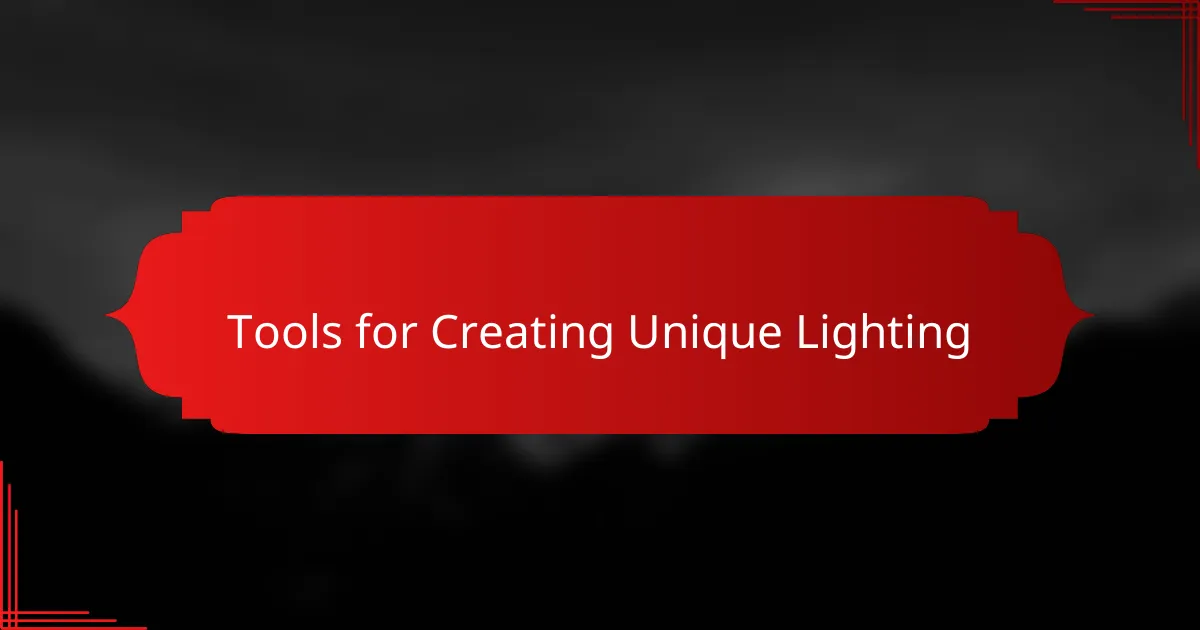
Tools for Creating Unique Lighting
When it comes to crafting unique lighting for my photography, I’ve found that having the right tools can make all the difference. I often rely on softboxes and reflectors to create a warm, inviting luminosity that complements the essence of the female singer. I’ve learned through experience that the position and quality of light not only enhance the subject’s features but also convey the mood I want to capture.
I also experiment with various colored gels to add artistic flair. For instance, the first time I used a blue gel, I was amazed by how it transformed an ordinary shot into something ethereal and dreamy. This experimentation not only enriches my work but also allows me to express different artistic visions, making each photograph unique to the subject and the moment.
As I navigate the world of lighting tools, I find it beneficial to compare options. Here’s a quick comparison of tools I’ve used in my creative process:
| Tool | Purpose |
|---|---|
| Softbox | Diffuses light for a soft, even illumination. |
| Reflector | Bounces light to fill shadows and enhance highlights. |
| Colored Gels | Adds creative color effects to the lighting. |
| Light Stand | Stabilizes and positions lights at various angles. |
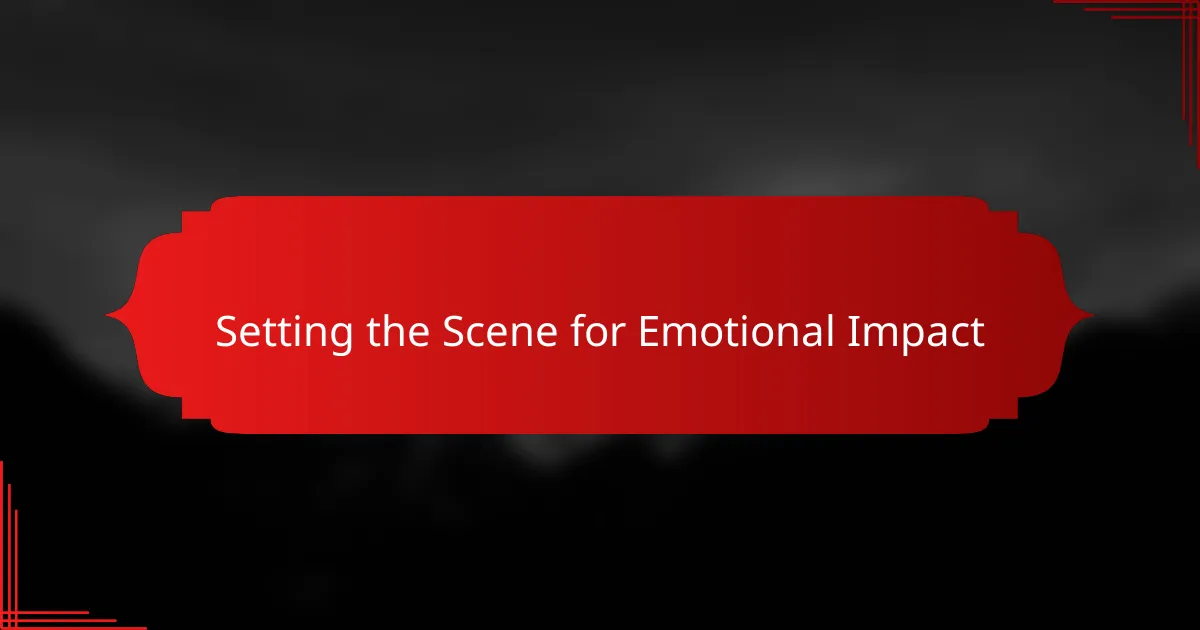
Setting the Scene for Emotional Impact
Setting the scene for emotional impact requires a deep understanding of how lighting influences mood and expression. I remember working on a shoot with a soulful singer where we chose warm, soft lighting to enhance the intimacy of her performance. This small adjustment dramatically changed the atmosphere, allowing her raw emotions to shine through and connect with the audience.
In another session, we experimented with stark, dramatic lighting while capturing a more dynamic artist. The contrast revealed a sense of urgency and passion in her expressions. It’s fascinating how different lighting setups can evoke distinct feelings and tell unique stories in a single captured moment.
| Lighting Type | Emotional Impact |
|---|---|
| Soft, Warm Lighting | Intimacy and Comfort |
| Stark, Dramatic Lighting | Urgency and Passion |

Personal Journey in Crafting Lighting
Crafting unique lighting has been a deeply personal journey for me. I remember the first time I stepped behind the lens, unsure yet excited, as I set up lights for a local artist’s performance. It hit me then, how the slightest change in light direction could shift the entire mood of a scene. That realization sparked my unending quest to find the perfect lighting that not only flatters but also tells a compelling story.
As I’ve dived deeper into this craft, I’ve experimented extensively with different tools and techniques. I distinctly recall using backlighting during a dusk shoot, where the singer’s silhouette danced against a vibrant sunset. Watching the magic unfold was exhilarating. It made me wonder: how often do we overlook such simple elements that can transform a photograph into an icon of emotion? The thrill of discovery keeps me pushing boundaries in every new project.
My evolution in lighting awareness has shaped how I connect with artists. Through observing their performances, I adapt my techniques to reflect their unique energy. One moment sticks with me: capturing a singer’s tears during a heartfelt ballad, illuminated by soft, glowing lights. It was in that instant I understood—lighting is not just about visibility; it’s about evoking emotion and fostering a genuine connection between the artist and the audience.
